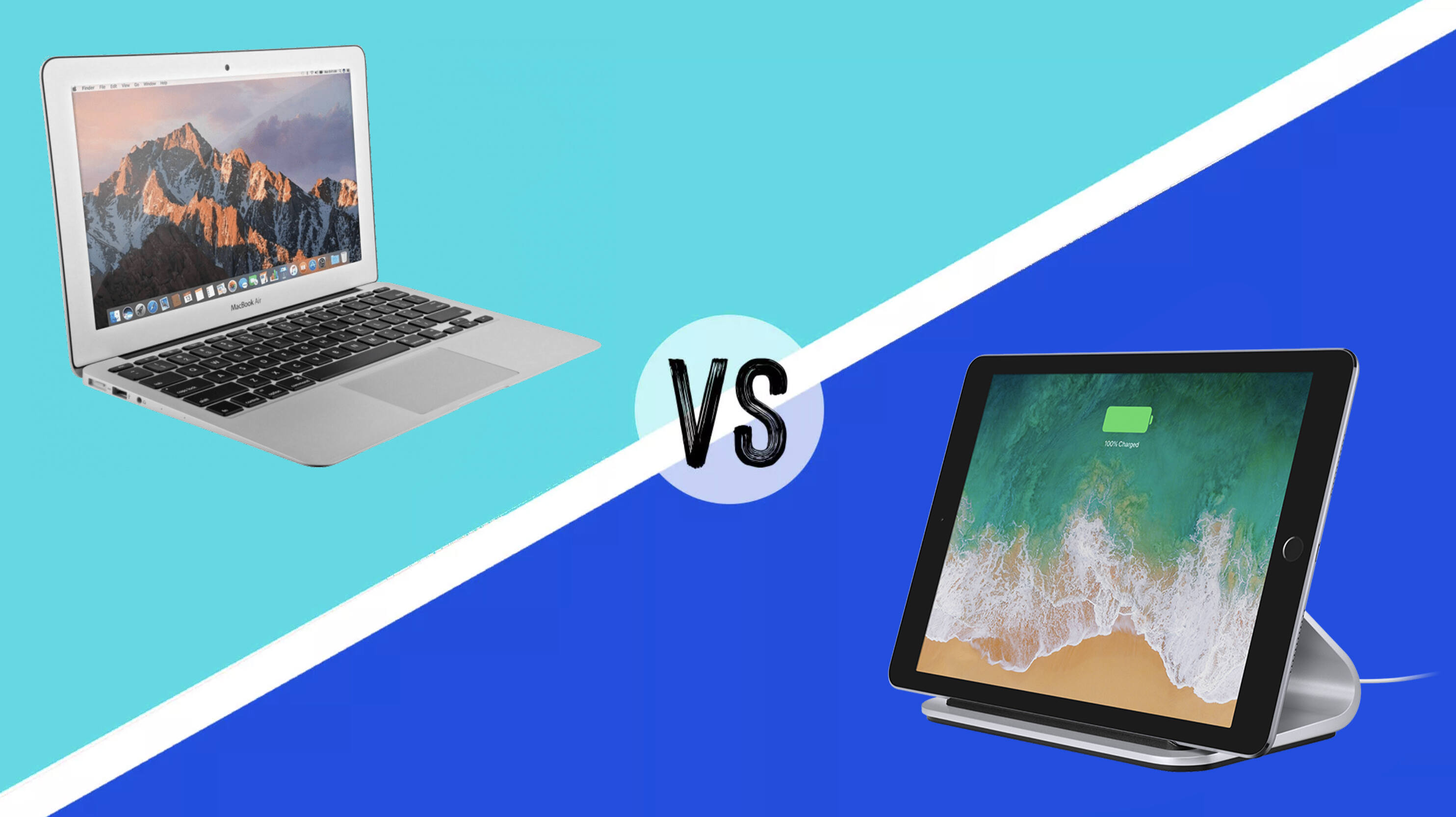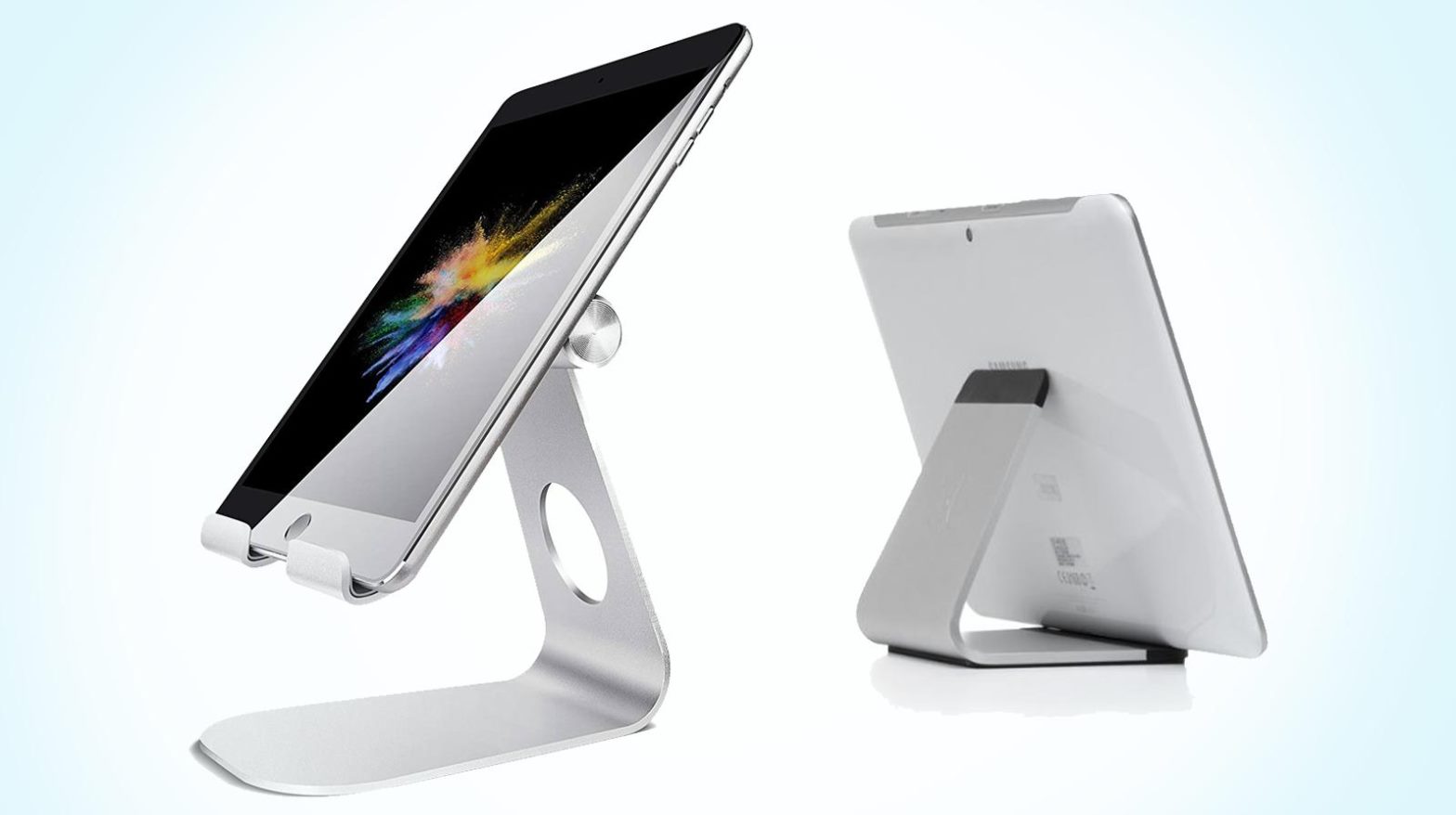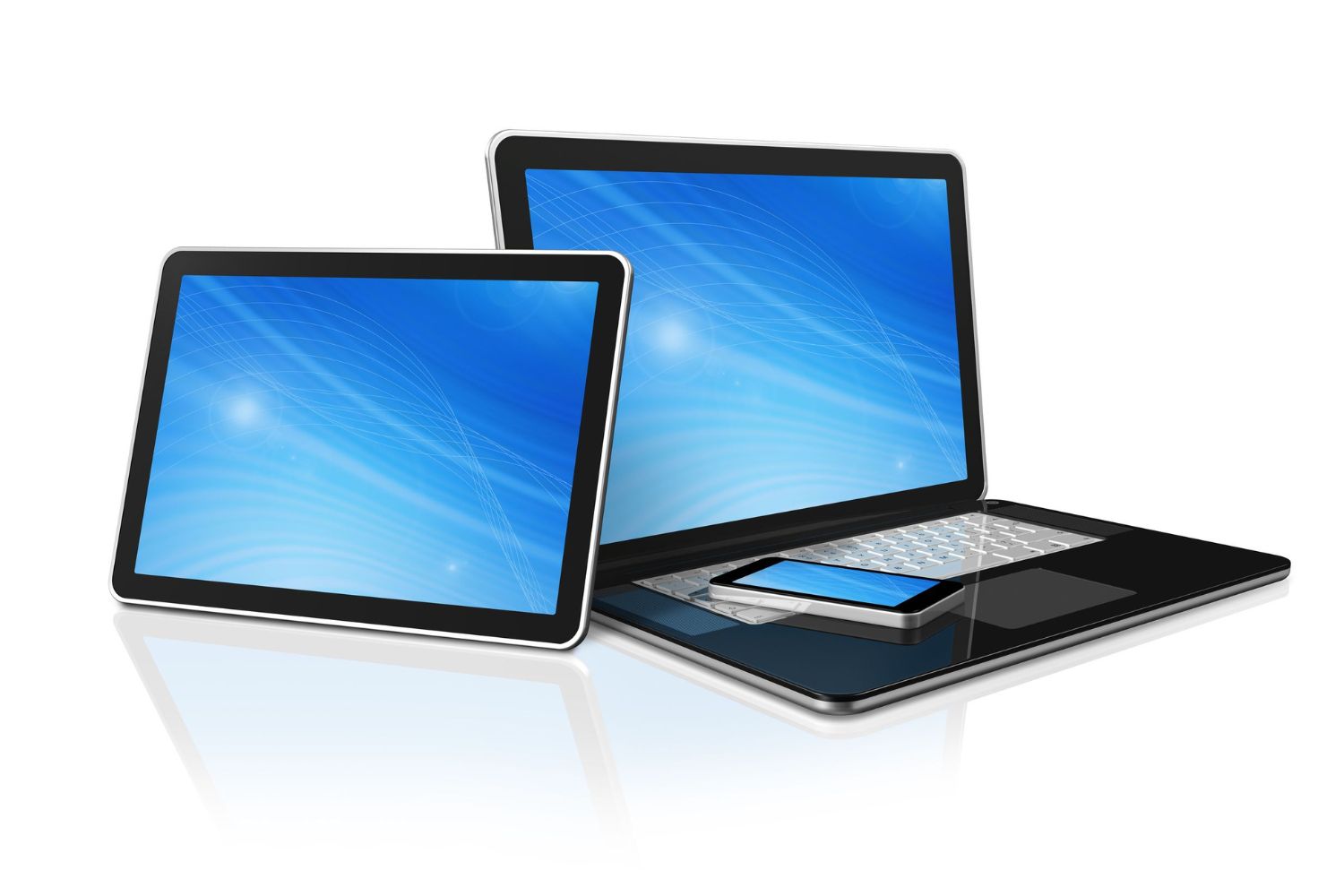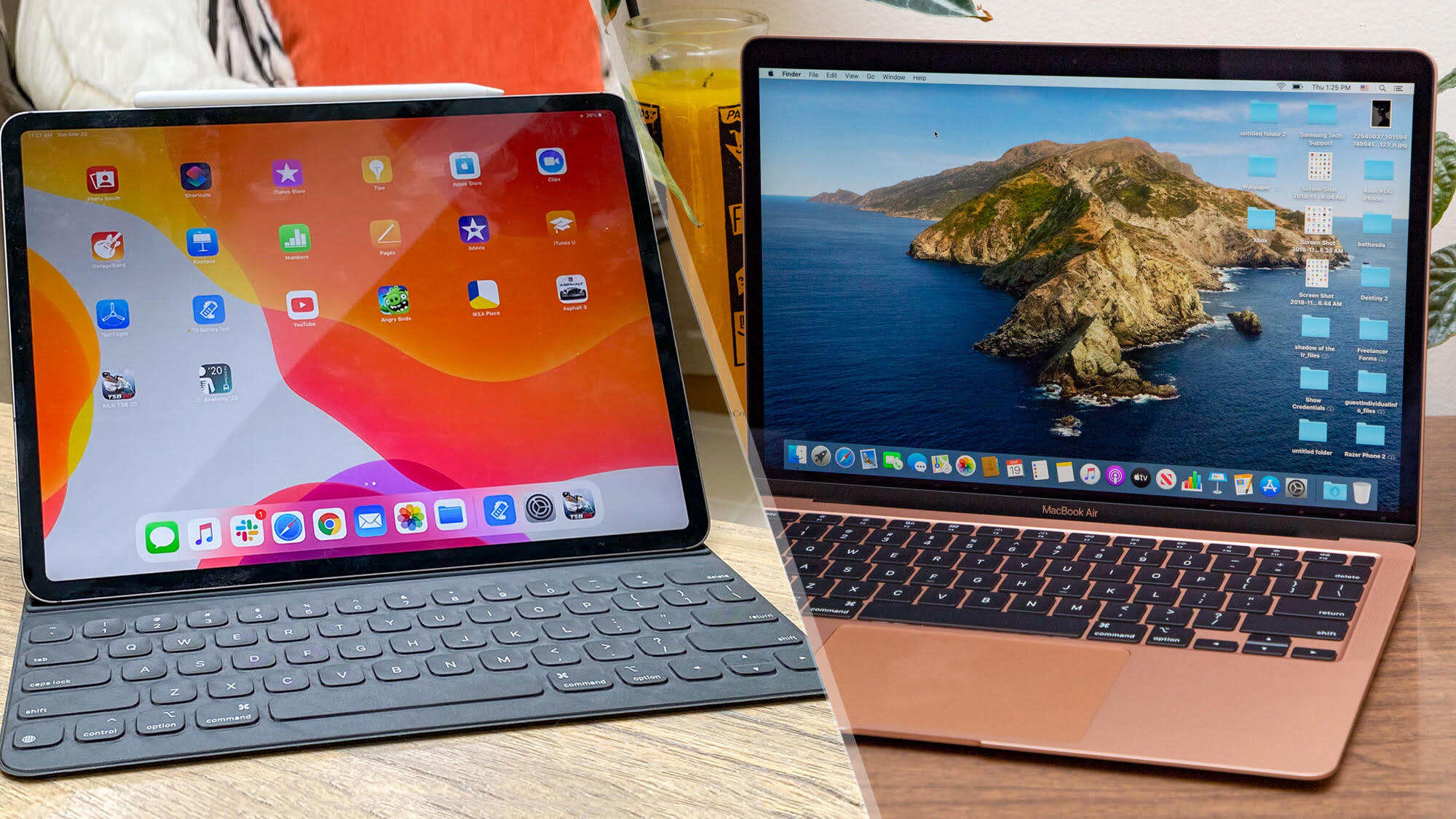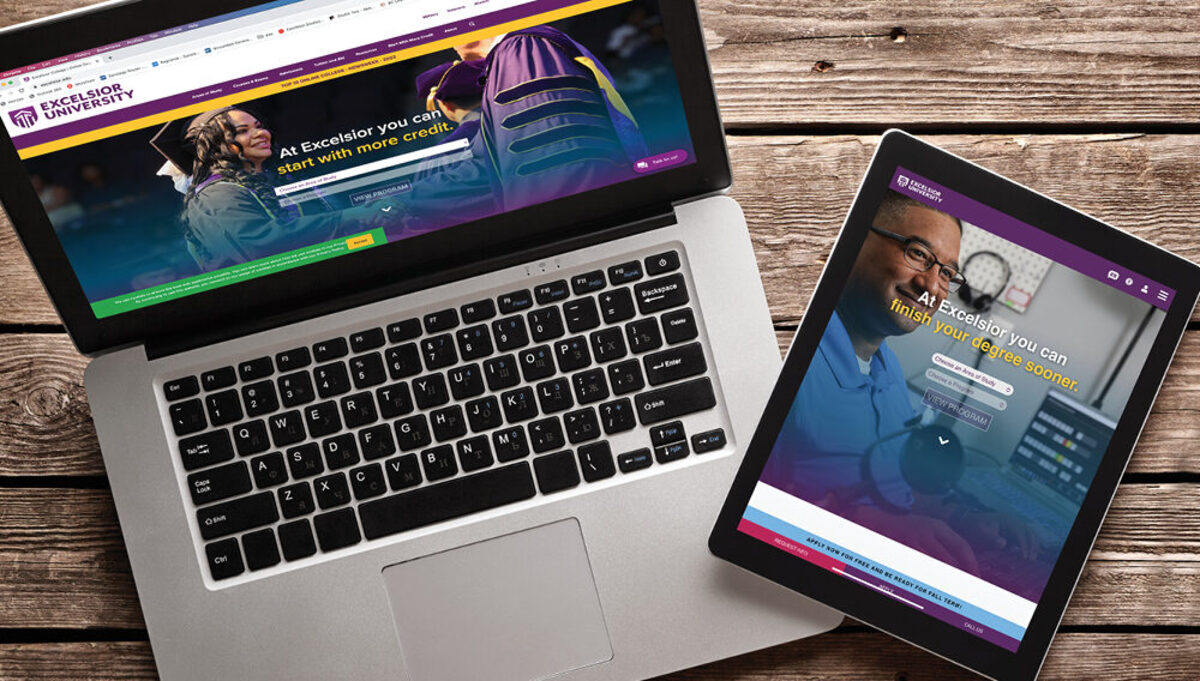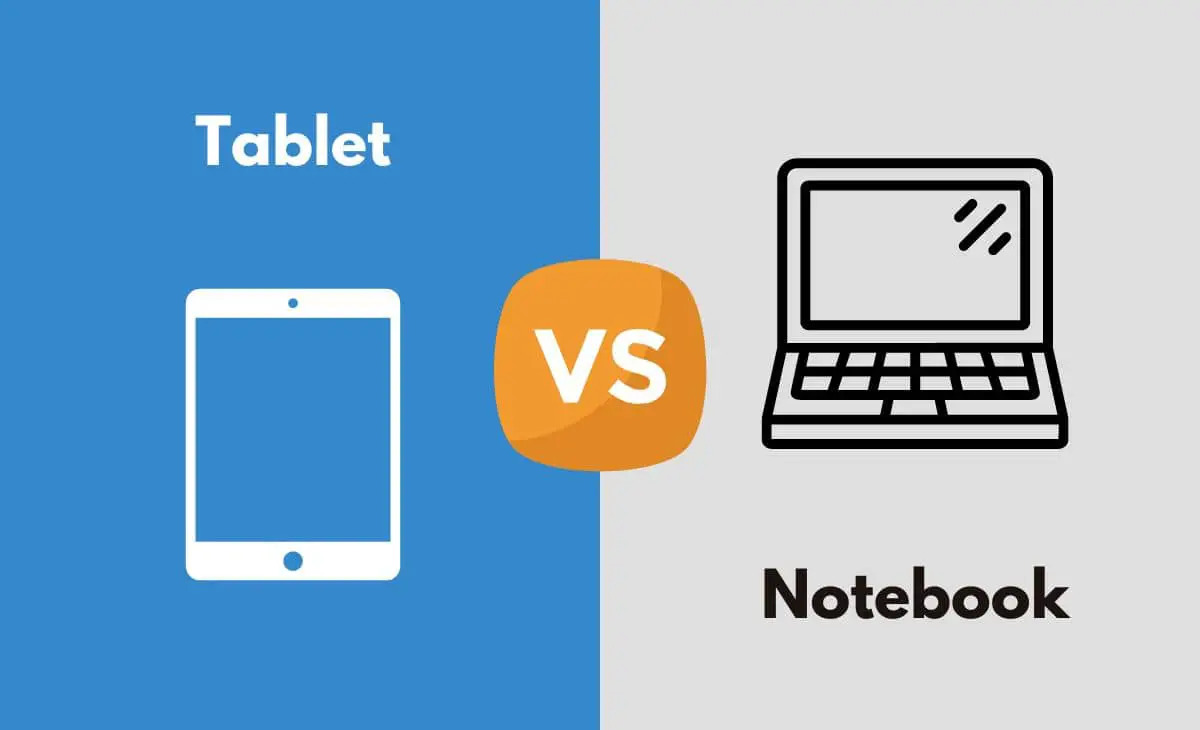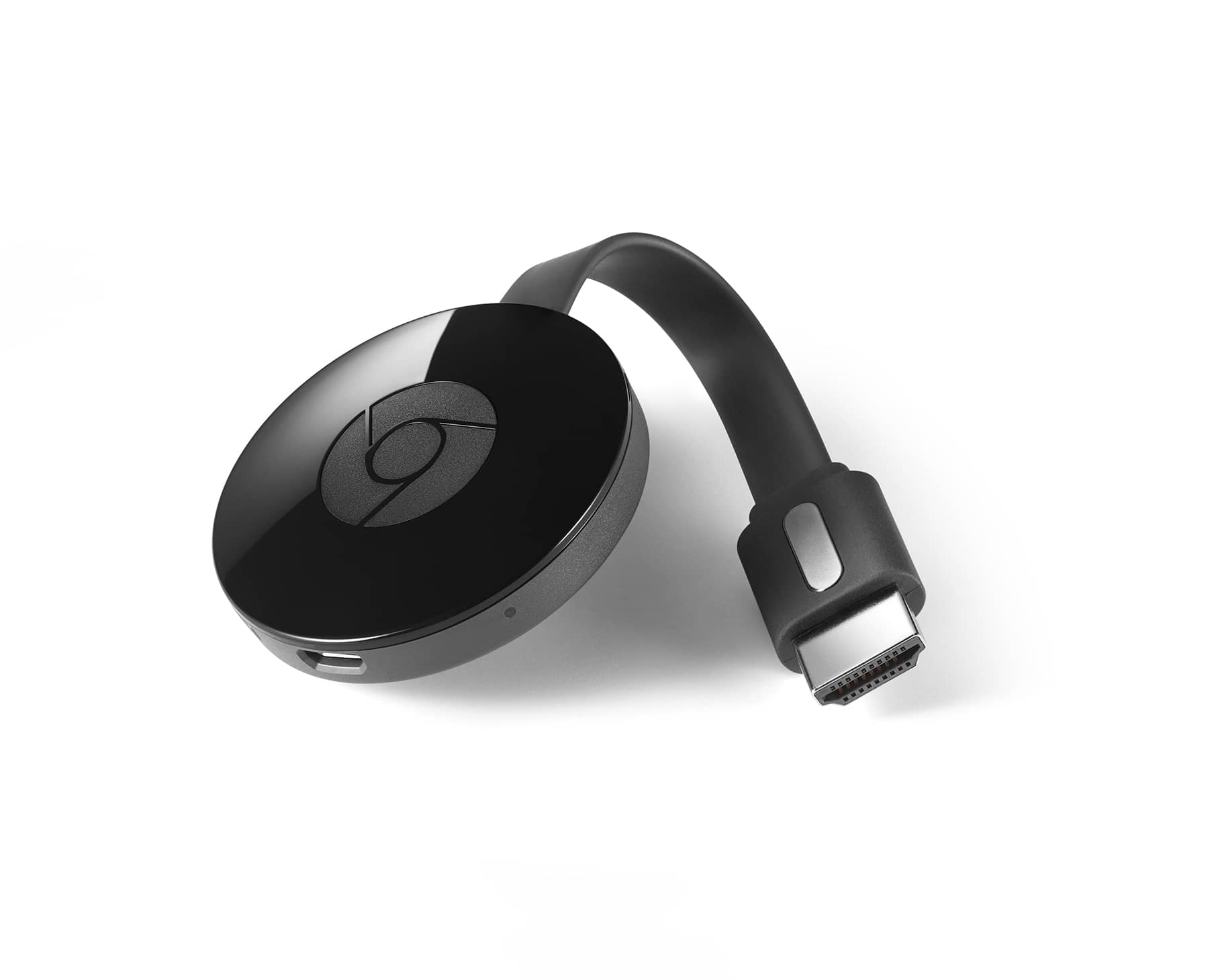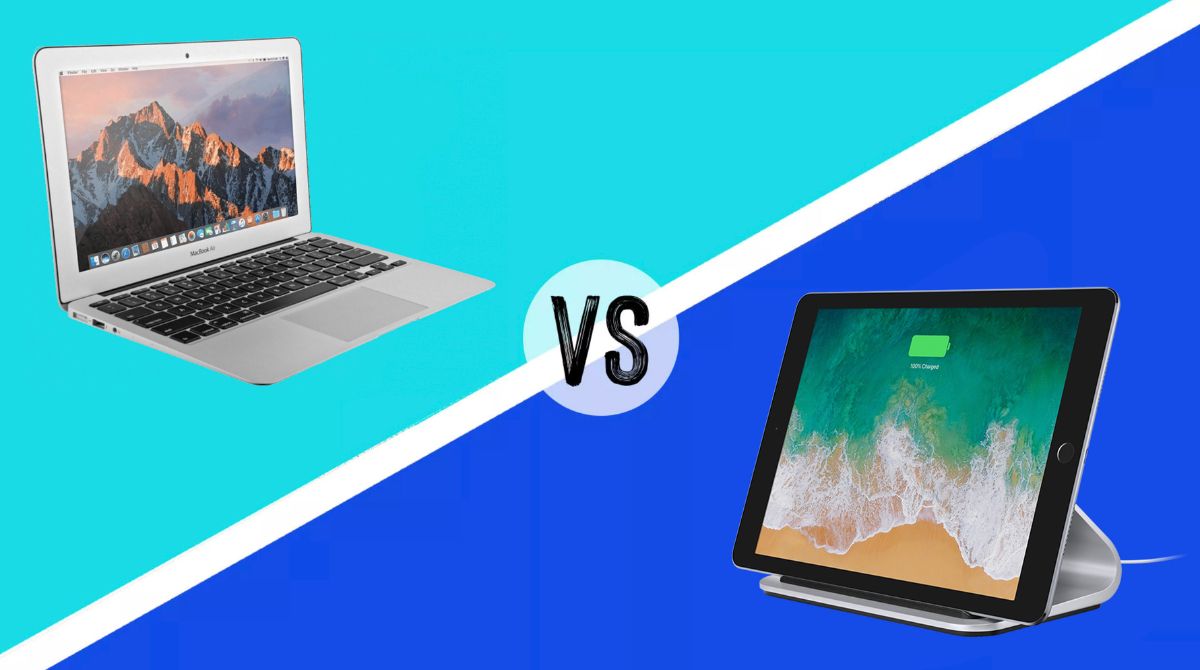Introduction
Laptops and tablets have become indispensable tools for both work and leisure activities in today’s digital age. They offer convenience, portability, and functionality that allow individuals to remain connected and productive on the go. However, when it comes to choosing between a laptop and a tablet, the decision might not be as straightforward as it seems. Both devices have their own set of advantages and limitations, catering to different needs and preferences.
A laptop is a traditional computing device with a clamshell design, usually equipped with a physical keyboard and trackpad. It offers a full-featured operating system and the ability to run powerful software. On the other hand, a tablet is a touch-screen device, typically smaller and lighter than a laptop, which offers a more intuitive and portable user experience.
One of the primary factors to consider when deciding between a laptop and a tablet is the intended usage. Laptops are well-suited for demanding tasks that require extensive processing power, such as video editing, gaming, or software development. They provide a larger screen size and a more comfortable typing experience, making them ideal for productivity-centric activities like writing reports, creating spreadsheets, or conducting research.
Tablets, on the other hand, excel in portability and ease of use. They are perfect for light tasks like web browsing, email checking, social media scrolling, or streaming media. Their touch-based interface and compact size make them a popular choice for reading e-books, watching movies, or playing casual games on the go.
Another important consideration is the operating system. Laptops often come with popular operating systems like Windows, macOS, or Linux, offering a wide range of software compatibility. Tablets, on the other hand, typically run on mobile operating systems like iOS or Android, which offer a more streamlined and app-centric experience.
Ultimately, the choice between a laptop and a tablet depends on your specific needs and preferences. It is crucial to assess your usage patterns, mobility requirements, and desired functionality before making a decision. In the following sections, we will explore the key factors that differentiate laptops and tablets, helping you make an informed choice based on your individual needs.
Portability
When it comes to portability, tablets have a clear advantage over laptops. Tablets are typically lighter, slimmer, and more compact, making them easy to carry around and use on the go. They are designed with portability in mind, often fitting comfortably in a bag or even a large pocket. This makes tablets a popular choice for frequent travelers, students, or those who work remotely.
Laptops, on the other hand, are bulkier and weigh more due to the additional components like a physical keyboard, trackpad, and larger battery. While there are thinner and lighter laptops available, they still can’t match the ultra-portability of tablets. However, depending on the specific model and size, laptops can offer a better typing experience and a larger display, which can be beneficial for certain tasks.
Another aspect of portability to consider is battery life. Tablets are generally known for their superb battery performance, often lasting for hours or even days on a single charge. This makes them a reliable choice for extended use while traveling or in situations where access to charging outlets is limited. Laptops, on the other hand, typically have shorter battery life due to the power requirements of the larger screen, processor, and other components. However, many laptops now feature improved battery technology, allowing them to last for several hours of continuous use.
In summary, if portability is a top priority for you, a tablet is the preferred choice. Its compact size, lightweight design, and excellent battery life make it the perfect companion for on-the-go individuals. However, if you prioritize a larger display, a physical keyboard, and more robust processing power, a laptop may be more suitable despite its relatively bulkier form.
Screen Size and Display
The screen size and display of a device play a crucial role in determining the user experience and the types of tasks it can handle effectively. When it comes to screen size, laptops generally offer a wider range of options compared to tablets.
Laptops typically come in various sizes, ranging from compact 11-inch models to large 17-inch displays. This flexibility allows users to choose a screen size that best suits their needs. A larger screen can be advantageous for tasks that require multitasking, graphic design, video editing, or any activity that benefits from a spacious workspace. Additionally, laptops often have higher resolution displays, providing sharper and more detailed visuals.
Tablets, on the other hand, are designed with portability in mind, resulting in smaller screen sizes. The most common tablet sizes range from 7 to 12 inches. While this may be limiting for some tasks, the smaller size contributes to the overall portability and ease of use, especially during long reading sessions or while watching videos on the go. Tablets often feature vibrant and high-resolution displays, providing excellent visual quality for movies, games, and other media consumption activities.
Another important aspect to consider is the type of display technology used. Laptops typically utilize LCD or LED screens, which offer good color accuracy and wider viewing angles. Some premium laptops also feature touch-screen capabilities, providing a more versatile user experience. Tablets, on the other hand, predominantly use IPS or AMOLED displays, which offer vibrant colors, deep blacks, and wider viewing angles. These displays are well-suited for multimedia consumption, providing an immersive visual experience.
Ultimately, the choice between a laptop and a tablet in terms of screen size and display depends on your specific needs and preferences. If you require a larger screen for productive work, graphic-intensive tasks, or multitasking, a laptop with its range of sizes and higher resolution is the better option. If portability and comfortable media consumption are more important to you, a tablet with its compact size and vibrant display will suit you better.
Input Methods
When it comes to input methods, laptops and tablets offer different options, each with its own benefits and considerations. Laptops primarily rely on traditional input methods such as a physical keyboard and trackpad, while tablets utilize touch-based input on the screen.
A laptop’s physical keyboard provides a tactile typing experience and allows for fast and accurate input. This makes laptops an ideal choice for tasks that involve extensive typing, such as writing reports, creating spreadsheets, or coding. The presence of a full-sized keyboard with dedicated keys also enhances productivity, as users can navigate through documents, perform shortcuts, and access function keys easily.
On the other hand, tablets use a touch-screen interface, where users interact directly with the display using their fingers or a stylus. This input method can be more intuitive and user-friendly, especially for tasks like browsing the web, reading e-books, or playing games that do not require heavy text input. Tablets also offer handwriting recognition and virtual keyboards, which can be used for occasional text input.
It’s important to note that there are detachable laptops and 2-in-1 convertible devices that combine the functionalities of laptops and tablets. These hybrid devices provide both touch-screen and physical keyboard options, giving users the flexibility to switch between different input methods based on their preferences and needs. This makes them suitable for a wide range of tasks, from content creation to media consumption.
While physical keyboards are generally considered more efficient for extensive typing, some users may prefer the simplicity and versatility of touch-screen input on tablets. The choice between a laptop and a tablet in terms of input methods depends on the nature of your work, the level of text input required, and your personal preference.
Performance and Power
Performance and power are crucial considerations when choosing between a laptop and a tablet, as they determine the device’s capability to handle various tasks efficiently. In general, laptops tend to offer better performance and more processing power compared to tablets.
Laptops are equipped with powerful processors, ample RAM, and dedicated graphics cards, making them capable of handling demanding tasks such as video editing, gaming, or running resource-intensive software. The presence of a full-featured operating system also allows for seamless multitasking, enabling users to run multiple applications simultaneously without experiencing significant performance degradation.
On the other hand, tablets are designed for lighter tasks and may not have the same level of performance as laptops. Tablets typically feature mobile processors, which are optimized for power efficiency rather than raw processing power. While tablets are perfectly capable of handling everyday tasks like web browsing, email checking, and media consumption, they may struggle with more demanding applications or multitasking scenarios.
When considering power, laptops also have an advantage over tablets. Laptops feature larger batteries due to their size and form-factor, resulting in longer battery life compared to tablets. This is especially important for individuals who require extended unplugged usage, such as frequent travelers or students who need their devices to last through a day of classes.
It’s worth noting, however, that there are high-performance tablets available in the market, such as certain models designed for professional work or specialized gaming tablets. These tablets may offer better performance compared to entry-level or mid-range ones but may still not match the level of performance provided by high-end laptops.
In summary, if you require a device with substantial processing power and the ability to handle resource-intensive tasks, a laptop is the preferred choice. Laptops provide superior performance, larger storage options, and the capability to run robust software applications smoothly. Tablets, while not as powerful, are more than capable of handling lighter tasks and are suitable for casual users or those who prioritize portability and ease of use.
Storage and File Management
Storage capacity and file management are important considerations when choosing between a laptop and a tablet, as they determine the amount of data you can store and how efficiently you can organize and access your files.
Laptops generally offer more storage options compared to tablets. They come with built-in hard drives or solid-state drives (SSDs) with larger capacities, allowing users to store a significant amount of documents, files, photos, and videos. Additionally, laptops often offer the option to upgrade or expand storage by adding additional external drives or expanding internal storage.
Tablets, on the other hand, typically have limited built-in storage due to their slim and compact design. Most tablets start with a base storage capacity and may offer options for higher capacities at a higher cost. However, tablets usually prioritize cloud storage solutions, where files and data can be stored on remote servers and accessed through an internet connection. This reliance on cloud storage allows tablets to keep their physical size and weight down while ensuring that files are readily available regardless of the device’s storage capacity.
In terms of file management, laptops offer a more traditional file system, similar to desktop computers. Users can easily organize and manage their files and folders, access them through a hierarchical structure, and manipulate them using extensive file management tools available in the operating system. This level of file management control is particularly advantageous for individuals who work with large amounts of files or need precise control over file organization.
Tablets, on the other hand, typically provide a simpler file management system. While they allow users to organize and access their files, the file management interface may be more streamlined and minimalist compared to laptops. Tablets often rely on file management apps or cloud-based file storage services, simplifying the user experience but potentially limiting some advanced file manipulation features.
It’s important to consider your storage needs and file management preferences when choosing between a laptop and a tablet. If you require a significant amount of storage and extensive file management capabilities, a laptop may be the better choice. However, if you primarily work with cloud storage solutions and prefer a streamlined file management experience, a tablet can still fulfill your needs.
Operating System and Software
The operating system (OS) and software selection are essential factors to consider when choosing between a laptop and a tablet, as they determine the user interface, software compatibility, and overall functionality of the device.
Laptops typically come with full-featured operating systems such as Windows, macOS, or Linux. These operating systems offer a wide range of software compatibility, allowing users to install and run various applications, including productivity software, creative tools, and professional-grade software. The flexibility of these operating systems makes laptops an excellent choice for individuals with specific software needs, such as graphic designers, programmers, or business professionals.
Tablets, on the other hand, mainly run mobile operating systems such as iOS (on iPads) or Android. These operating systems are designed with simplicity and touch-based interactions in mind, providing a more user-friendly and intuitive interface. While the software options for tablets may be more limited compared to laptops, there is still a wide range of apps available through app stores. Tablets are well-suited for tasks like web browsing, email, social media, multimedia consumption, and some lightweight productivity applications.
It is worth noting that there are hybrid devices available, such as Microsoft Surface, which run a full Windows operating system but offer the convenience and touch-based interface of a tablet. These devices bridge the gap between traditional laptops and tablets, allowing users to enjoy the versatility of both operating systems.
When considering the operating system and software selection, it is crucial to assess your specific needs and the types of applications you require. If you rely heavily on specific professional software or require a broader range of software compatibility, a laptop is the preferred option. On the other hand, if your needs are more centered around lightweight applications and a user-friendly interface, a tablet may be more suitable.
In summary, laptops excel in software versatility, providing access to a wide range of applications and comprehensive operating systems. Tablets, while offering a more limited software selection, are well-suited for casual users who prioritize ease of use and a touch-based interface.
Battery Life
Battery life is a crucial consideration when choosing between a laptop and a tablet, as it determines how long the device can run on a single charge without needing to be plugged in. The battery life of a laptop or tablet can significantly affect its portability and convenience, particularly for users who are frequently on the move or in situations where access to power outlets is limited.
Tablets are generally known for their impressive battery performance. They are designed to be power-efficient, allowing them to last for extended periods without needing to be charged. In many cases, tablets can provide battery life of seven to twelve hours or even more, depending on usage patterns and specific models. This makes tablets an excellent choice for individuals who require long periods of unplugged usage, such as students, travelers, or those who work remotely.
Laptops, on the other hand, typically have shorter battery life compared to tablets due to their larger screens, more powerful processors, and additional components like a physical keyboard and trackpad. However, battery life can vary significantly depending on the laptop model and usage patterns. High-end laptops designed for gaming or resource-intensive tasks may have shorter battery life, while ultrabooks or laptops with more energy-efficient components can offer longer battery life.
It is worth mentioning that improvements in battery technology have led to significant advancements in laptop battery life in recent years. Many laptops now offer battery-saving features, such as power management settings or hybrid power modes, which allow users to customize performance levels and extend battery life. Additionally, some laptops feature fast-charging capabilities, allowing users to quickly recharge the battery when needed.
When considering battery life, it is crucial to assess your specific needs and usage patterns. If you require a device that can last for long periods without needing to be plugged in, a tablet may be the preferred choice. Tablets are excellent for individuals who value portability and extended unplugged usage. If battery life is a critical factor for you and you need the versatility and power of a laptop, it is advisable to consider laptops with more energy-efficient components or look for laptops with extended battery options.
In summary, tablets generally offer better battery life compared to laptops. However, advancements in laptop battery technology and power-saving features have narrowed the gap between the two. Regardless of your choice, it is essential to consider your usage habits and specific needs to ensure that the device’s battery life aligns with your requirements.
Connectivity Options
Connectivity options are an important consideration when choosing between a laptop and a tablet, as they determine how you can connect and interact with other devices, networks, and peripherals.
Laptops typically offer a wide range of connectivity options due to their larger size and more extensive hardware capabilities. Most laptops come equipped with multiple USB ports, HDMI or DisplayPort for video output, audio jacks, Ethernet ports, and SD card readers. These connectivity options allow you to connect to various external devices such as external monitors, printers, scanners, external storage, and more. Laptops also often feature built-in Wi-Fi and Bluetooth for wireless connectivity, enabling you to connect to networks, speakers, headphones, and other wireless peripherals.
Tablets, on the other hand, have a more limited range of connectivity options due to their smaller size and thinner form factor. Tablets typically feature a USB-C or Lightning port for charging and data transfer, along with a headphone jack. Some tablets also support expandable storage through microSD cards. However, tablets generally lack the range of ports found on laptops, and their limited connectivity options may require the use of adapters or specialized accessories to connect to external devices.
Wireless connectivity is a strength of tablets, with built-in Wi-Fi and Bluetooth capabilities allowing easy access to internet networks and wireless peripherals like keyboards, mice, and speakers. Tablets also often offer support for cellular connectivity, allowing you to access the internet on the go through a mobile data network, although this feature may come at an additional cost.
Hybrid devices, such as 2-in-1 laptops or detachable laptops, bridge the gap between laptops and tablets in terms of connectivity. These devices offer a combination of laptop-like connectivity options, such as full-sized USB ports and video outputs, along with tablet-like features, such as touch screens and support for stylus input.
When considering connectivity options, it is essential to evaluate your specific needs. If you require a wide range of connectivity options and frequently connect to external devices, a laptop would be the preferable choice. Laptops provide versatility and compatibility with various peripherals and networks. If you prioritize wireless connectivity and portability, tablets can still meet your needs, especially for tasks like web browsing, media consumption, and casual use.
In summary, laptops offer a wider range of connectivity options, making them more suitable for connecting to external devices and networks. Tablets, while offering more limited connectivity, excel in wireless connectivity and portability.
Price
Price plays a significant role in the decision-making process when choosing between a laptop and a tablet. The cost of these devices can vary significantly depending on various factors such as brand, specifications, build quality, and additional features.
As a general rule, laptops are often more expensive than tablets. This is primarily due to the higher manufacturing costs associated with larger screens, more powerful hardware components, and the inclusion of additional features like physical keyboards, trackpads, and more extensive connectivity options. Laptops also tend to offer a wider range of options, from budget-friendly models to premium high-performance devices, allowing users to choose a laptop that fits their specific needs and budget.
Tablets, on the other hand, are often more budget-friendly compared to laptops. While there are high-end tablets available with premium features and specifications, there is generally a broader range of affordable options available. Tablets offer a more streamlined and compact design, fewer hardware components, and less powerful processors, which contribute to lower production costs.
Hybrid devices, such as 2-in-1 laptops or detachable laptops, may fall somewhere in between laptops and tablets in terms of price. These devices typically offer a premium price point as they combine the functionalities of both, allowing users to enjoy the versatility of a laptop and the portability of a tablet. The price of these devices will depend on the specific features and hardware specifications.
It is important to consider your budget and specific needs when making a decision based on price. If budget is a significant consideration and you primarily require a device for light to moderate tasks like web browsing, media consumption, and casual use, a tablet may be the more affordable option. On the other hand, if you require a more powerful and versatile device for productivity, multitasking, or demanding tasks like content creation or gaming, a laptop may be a better long-term investment despite the higher price tag.
In summary, laptops generally have a higher price range compared to tablets due to their larger screens, powerful hardware, and additional features. Tablets tend to be more budget-friendly, making them a suitable choice for those with modest requirements or a limited budget. Hybrid devices offer a middle ground in terms of pricing, allowing users to enjoy the benefits of both laptops and tablets at a higher price point.







